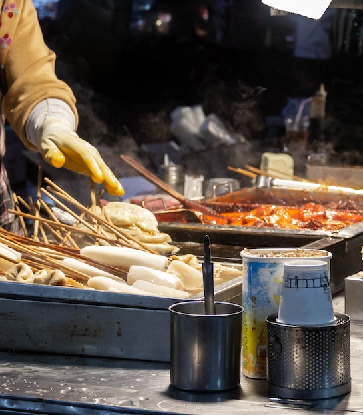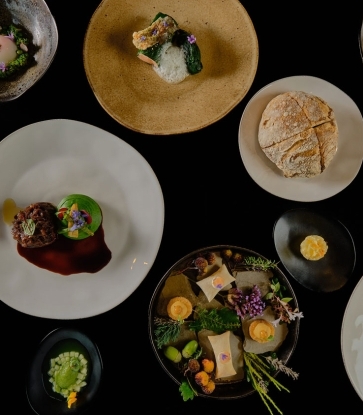
But take a closer peek at some of these classic Ukrainian dishes—such as holubtsi, a dish of boiled cabbage rolls stuffed with meat, rice, potatoes and spices—and there is a wealth of ingredients from the verdant Carpathians mountainous region in the west of Ukraine.
One of Ukraine’s up-and-coming chefs, Yaroslav Artyuk from Kanapa restaurant, gives us a peek into his Ukrainian kitchen pantry.

Salo
Prized for its rich buttery fat and melt-in-your-mouth texture, these slabs of cold cured pork fat are one of Ukraine’s national food. For salo, potato-fed pigs are used, as their bellies tend to have a higher starch content and its fat yields more meat. Salo is best served on a slice of dark rye bread with pickled cucumbers or horseradish sauce before being washed down with a shot of vodka.
Sea Buckthorn Oil
This golden-brown oil is extracted from sea buckthorn berries that are commonly found in the Carpathians mountains. The vegetable-based oil is widely used as a salad dressing as it has a sour zing and a floral scent. This oil can also be stirred into teas and the berries are also used to make jam.
Brynza
This sheep’s milk cheese is made from an ancient recipe that dates back more than 1,000 years. The milk comes from sheep that graze in the Western Carpathian Mountains, and then fermented in a brine that imparts a saltiness that is reminiscent of Parmesan. Brynza is typically stuffed in varenyky (boiled dumplings that have an assortment of sweet and savory fillings) or sliced onto salads.Pike Perch Caviar
Unlike typical sturgeon caviar, these amber beads come from the humble pike fish. The delicate burst of brine from pike perch caviar is best appreciated with bread or mixed with butter, which is a popular indulgence in the southern port city of Odessa.





















